
Radical Offshore Racing Update
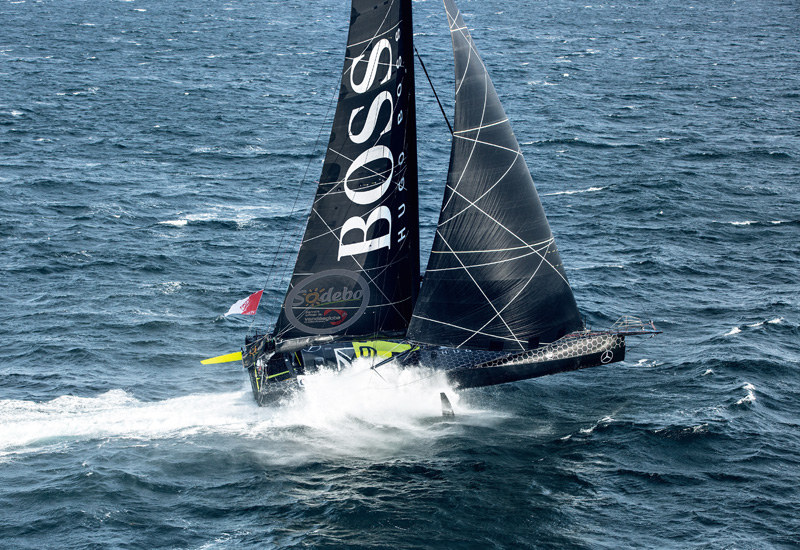
Now more than two weeks old, this eighth edition of the Vendée Globe is beginning to show its true colors, as the leaders approach the latitude of the Cape of Good Hope.
After starting in benign downwind sailing conditions that allowed the fleet to escape from the Bay of Biscay and Europe without any retirements or boat-breaking conditions, damage and attrition are beginning to play an important role in this race. Up front, race leader Alex Thomson on Hugo Boss is sailing with a broken starboard foil after a collision with an unidentified object. Still dragging a stump of a foil, the British skipper has managed to maintain boat speeds near to those of his pursuing rivals and has retained a lead of some 85 miles over second place.
On his way south, Thomson set a new reference time for the passage from Les Sables d’Olonne to the equator: 9 days, 7 hours, 3 minutes, bettering the 2004 record time of Jean Le Cam by one day and four hours.
Behind Thomson, Sébastien Josse on Edmond de Rothschild and Armel Le Cléac’h on Banque Populaire have been trading second place on the leaderboard for days now, while also beginning to claw back miles from the wounded Hugo Boss, which had shown a clear speed advantage over the fleet before sustaining damage. Behind second and third place, there are just four more boats (Safran, PRB, SMA and Maître Coq) that have managed to hook into this first major low-pressure system and form a seven-boat lead pack. Averaging 20+ knots of boatspeed most of the way, the lead pack has decisively pulled away from the rest of the fleet which is now stuck in lighter air off the coast of Brazil.
Bertrand de Broc on MACSF has become the first boat to officially retire from the race, though he’s soon to have company. For de Broc, it was a collision at sea and damage to the hull and keel that will end his race. Nearly back in Europe now is Tanguy de Lamotte on Initiatives-Coeur, whose masthead sheave assembly failed, leaving the French skipper with no alternative but to head back to Les Sables d’Olonne.
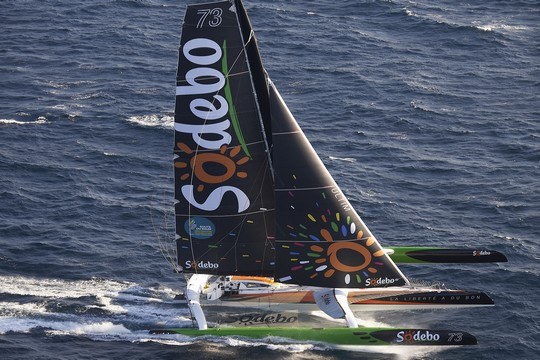
©2016Latitude 38 Media, LLC
Meanwhile, two maxi trimarans are attempting to break round-the-world sailing records. Thomas Coville on Sodebo Ultim’ is now just 388 miles ahead of the reference time set during Francis Joyon’s 2008 record, after Coville’s boat slowed down in very light air — which forced him to make many maneuvers — underneath South Africa. He has now hooked into a low-pressure system and is quickly working his way east at more than 25 knots.
Having just left Europe yesterday, Francis Joyon and crew on IDEC Sport are making a second attempt at Loïck Peyron and crew’s Jules Verne Trophy record for the fastest outright circumnavigation. After a slow start, the team is now speeding south. While their window through the North Atlantic doesn’t look as fast as Banque Populaire V‘s magical 2012 run, Dutch weather router Marcel van Triest is confident that the window in the South Atlantic looks perfect to get IDEC Sport into the Southern Ocean ahead of record pace.
How fast is IDEC Sport? Check out this video shot just a few days before the start of Joyon’s latest lap around the planet.
Courtesy IDEC Sport
Land Rover BAR Tops AC World Series
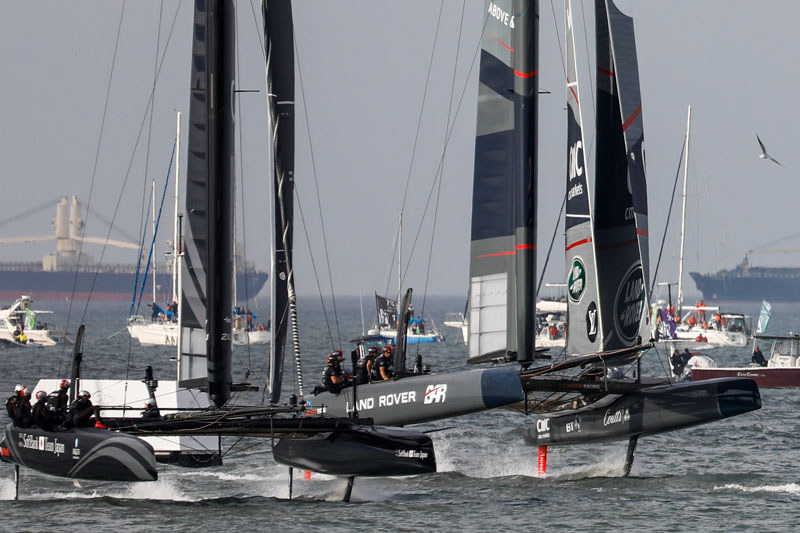
No glorious comeback upset the standings in the final Louis Vuitton America’s Cup World Series event, held over the weekend in Fukuoka, Japan — Sir Ben Ainslie’s British Land Rover BAR team led the series going in and emerged with the event victory, the overall victory, and two bonus points that they’ll carry with them into the America’s Cup Qualifiers next May in Bermuda.
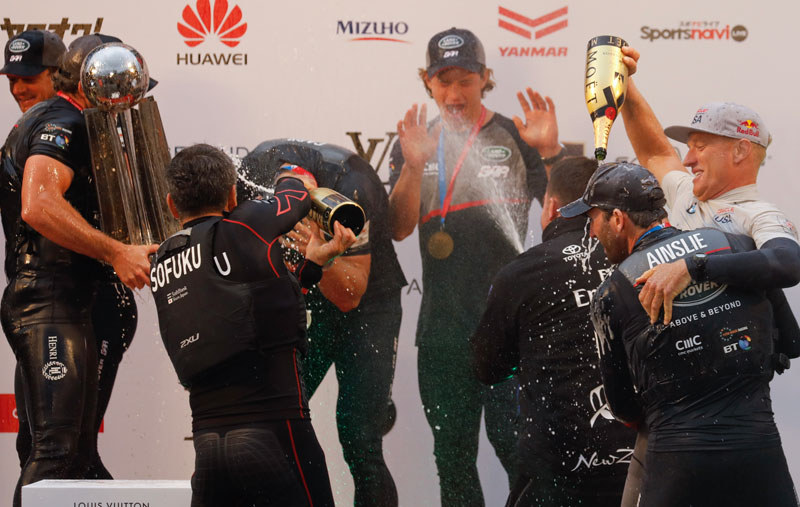
After thunder and lightning on Friday night, Saturday broke cloudy and overcast, but without rain. "The racing got off on time to a crowd of over 6,000 on Jigyohama Beach in front of the Hilton Hotel," reports Hawaii-based photographer Phil Uhl. "Many more were on the surrounding beaches and on spectator craft. The conditions improved with each race, and by the third the sun was out and the breeze was up."
Land Rover BAR (UK) won the first race with Team New Zealand second and Oracle Team USA third. "Race 2 was won easily by SoftBank Team Japan, USA second and UK third." Oracle won the third race with Land Rover BAR in second and the Kiwis in third.
"It was very exciting when Team Japan won Race 2," writes Bruce Balan of the Cross 46 Migration, a California-based trimaran currently cruising in Japan. "A cheer went up all around and it was really nice that they got the bullet, since, except for a second in Race 6, their performance wasn’t stellar in the other races."
Describing Sunday, Uhl noted, "The conditions were not great: light wind and overcast, but no rain — no foiling either, so not as much excitement as Saturday. The surprises were Artemis taking the first two races and Groupama Team France winning their first race to end the event. Land Rover had a second, third and fourth, which was enough to secure wins in both the Fukuoka event and the overall ACWS trophy with 512 points."
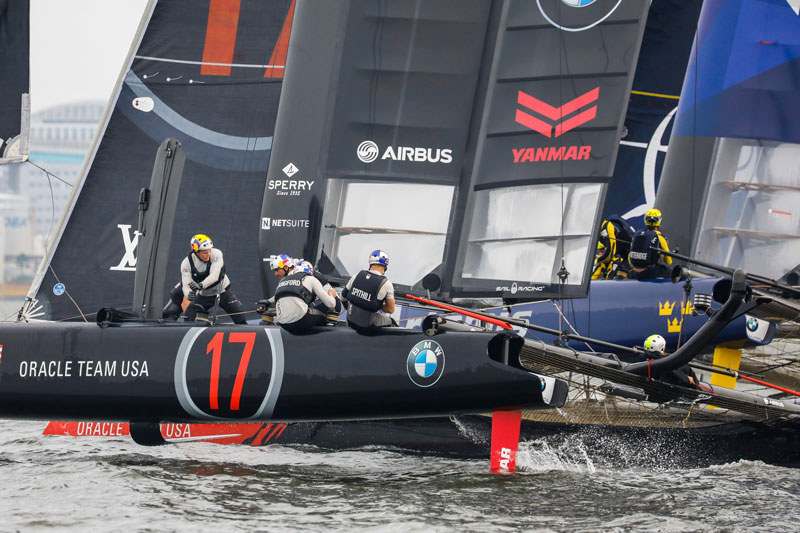
Uhl notes that the defender, Oracle Team USA, sailing for San Francisco’s Golden Gate Yacht Club, had two thirds and a fifth on Sunday and finished third for Fukuoka and second for the ACWS with 493 points. "The Kiwis finished sixth, second, and fourth for a fourth for Fukuoka and third for ACWS with 485 points."
"In many places throughout our travels in Japan we’ve met sailors who were planning to go to Fukuoka for the races," commented Balan. "It’s a fairly small and tight community. We are constantly surprised at how many Japanese sailors have been to the USA – usually to San Francisco for the Big Boat Series, San Diego for the America’s Cup or Hawaii for the Kenwood Cup. They were generally very excited about the ACWS coming to Japan."
Getting to the Tropics
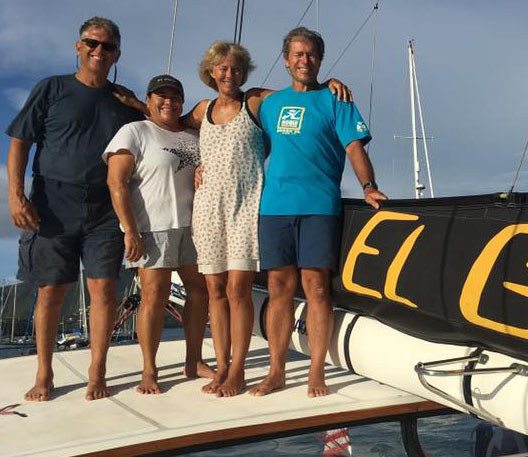
©2016Latitude 38 Media, LLC
Do you know the three reasons that it’s much harder to get to the tropics from the Northeast and mid-Atlantic states than it is from California?
1) It’s twice as far to get from the East Coast to the Eastern Caribbean, meaning the British Virgins, St. Martin and so forth, than it is to get from San Diego to Cabo. It’s about 1,500 miles versus 750 miles.
2) When you go south from the East Coast to the Caribbean, you have to expect every kind of weather from every direction — at least until you get to ‘Highway 61’. Furthermore, the hurricane season and winter storm seasons overlap in the Atlantic/Caribbean. When you sail from San Diego to Cabo — and farther south — you can count on the wind being out of the north or northwest, and that it will rarely blow over 25 knots.
3) The only possible place to avoid bad weather on the way from the Northeast to the Eastern Caribbean is Bermuda, and that’s often not an option. When you sail from San Diego to Cabo, there are plenty of places to duck in. Indeed, about a dozen Baja Ha-Ha boats ducked into San Quintin for the night when it got breezy on the first leg of this year’s Ha-Ha.
We know of three boats that recently sailed from Virginia to the British Virgins as part of the Salty Dawg Rally. Their crews included Annie Gardner and Eric Witte on the San Diego-based Catana 47 El Gato. The couple bought the boat in Europe, did a summer in the Med, a winter in the Caribbean and a summer in the Northeast, and are heading back to the Caribbean where they’ll do some charters. Yes, you can charter with the only woman to navigate a boat to victory in the America’s Cup.
Jim Fair and Linda Powers of the Berkeley-based Outbound 46 Chesapeake also did the Salty Dawg to the BVIs. The couple have sailed most of the way around the world during the last eight years. Fair noted that West Coast and tradewind sailors "have it easy" compared to those sailing on the East Coast and to the Caribbean.
And then there was Bill Lilly and his all-woman crew on his Newport Beach-based Lagoon 47 Moontide. One of the women racked up 18 knots going down a wave, breaking the ‘fiberglass ceiling’ speed record on the cat.
All three of the above boats took between eight and nine days to make the passage, with a combination of light air and motoring in the early going, and fine sailing the last couple of days.
